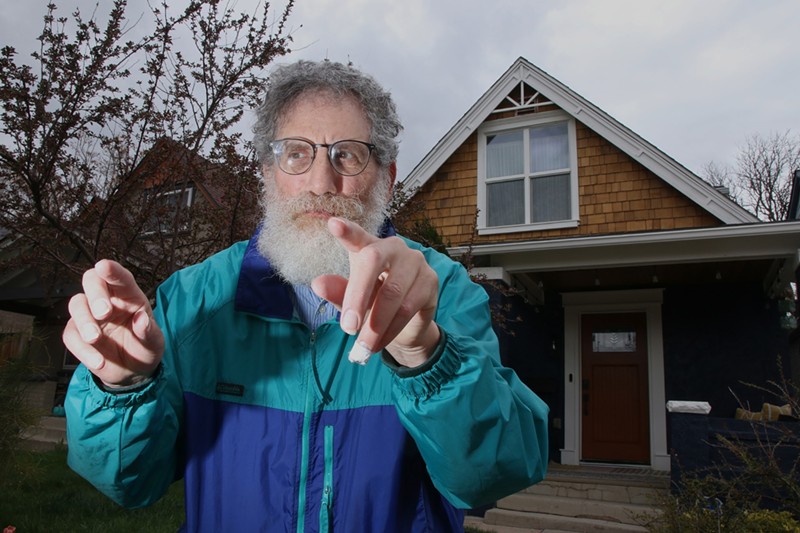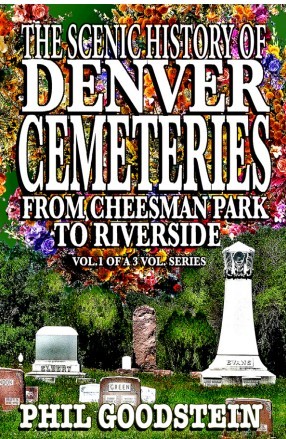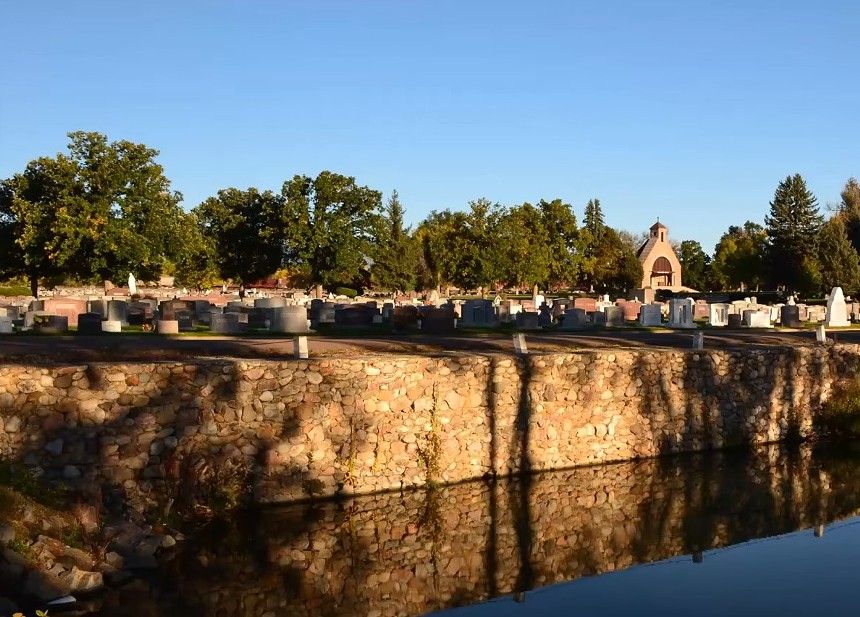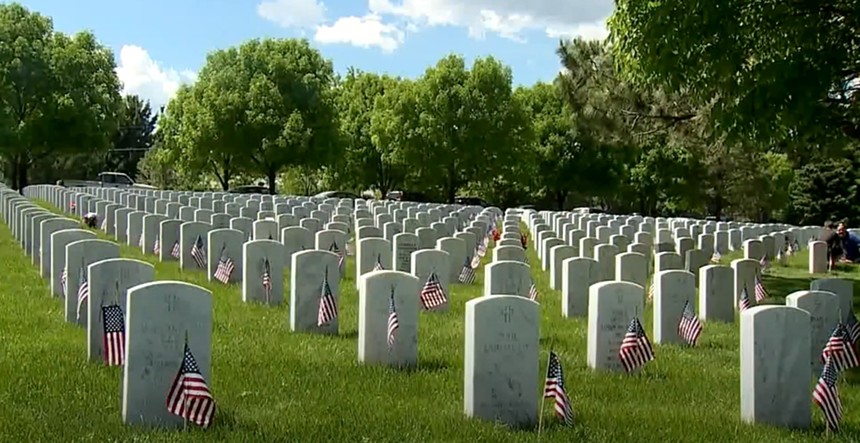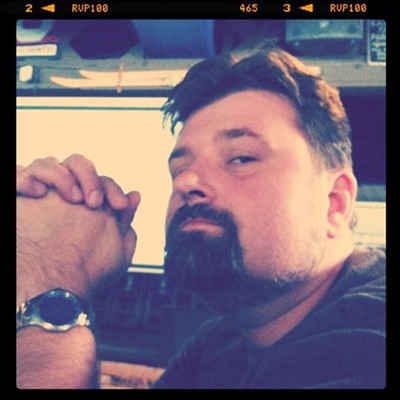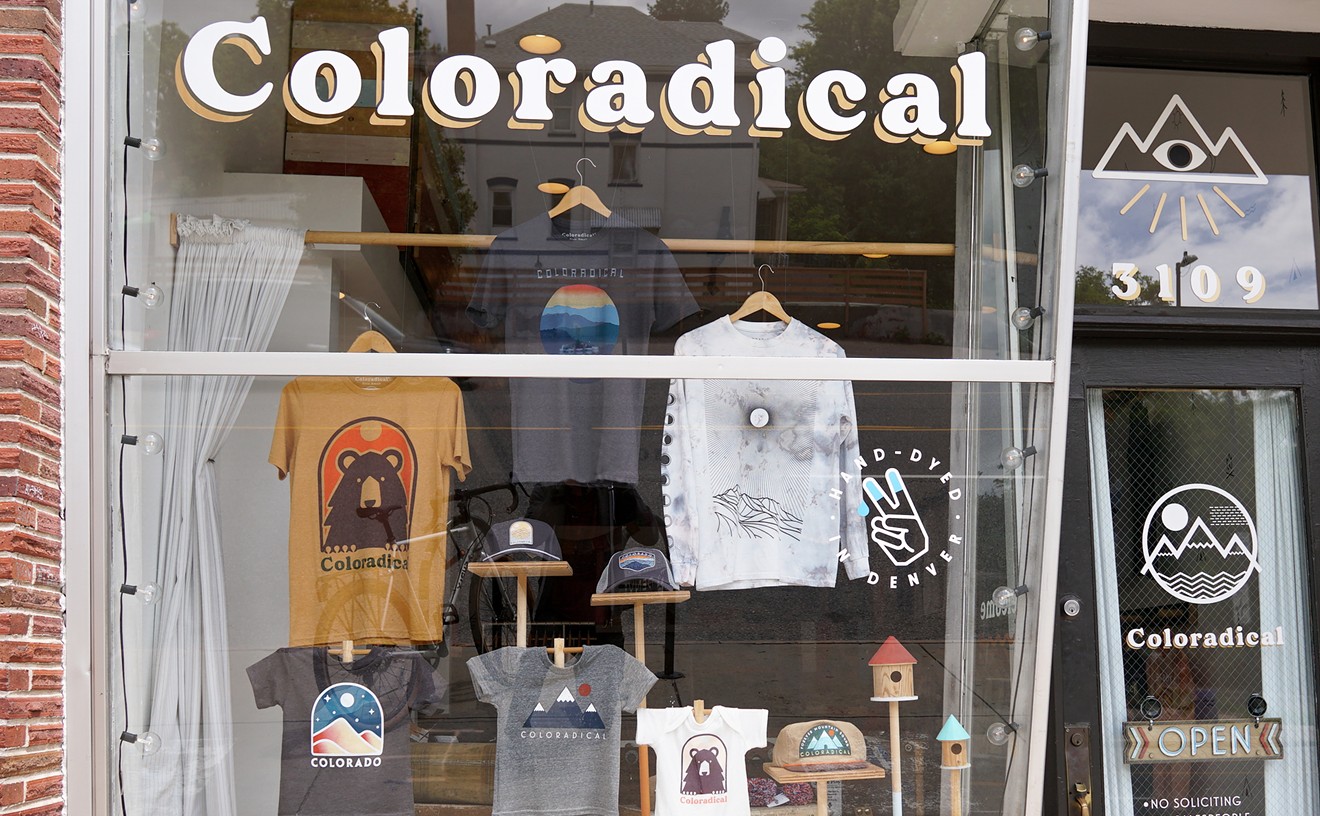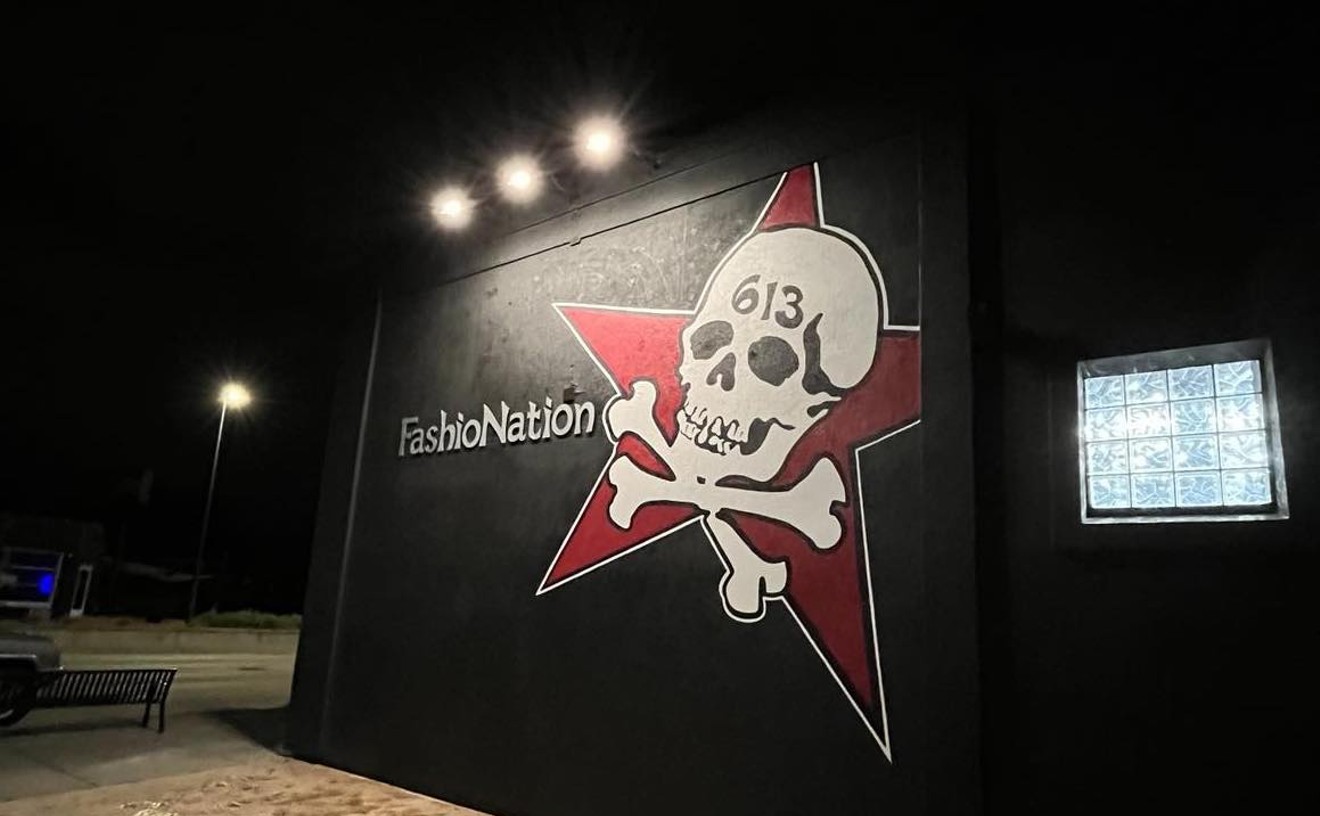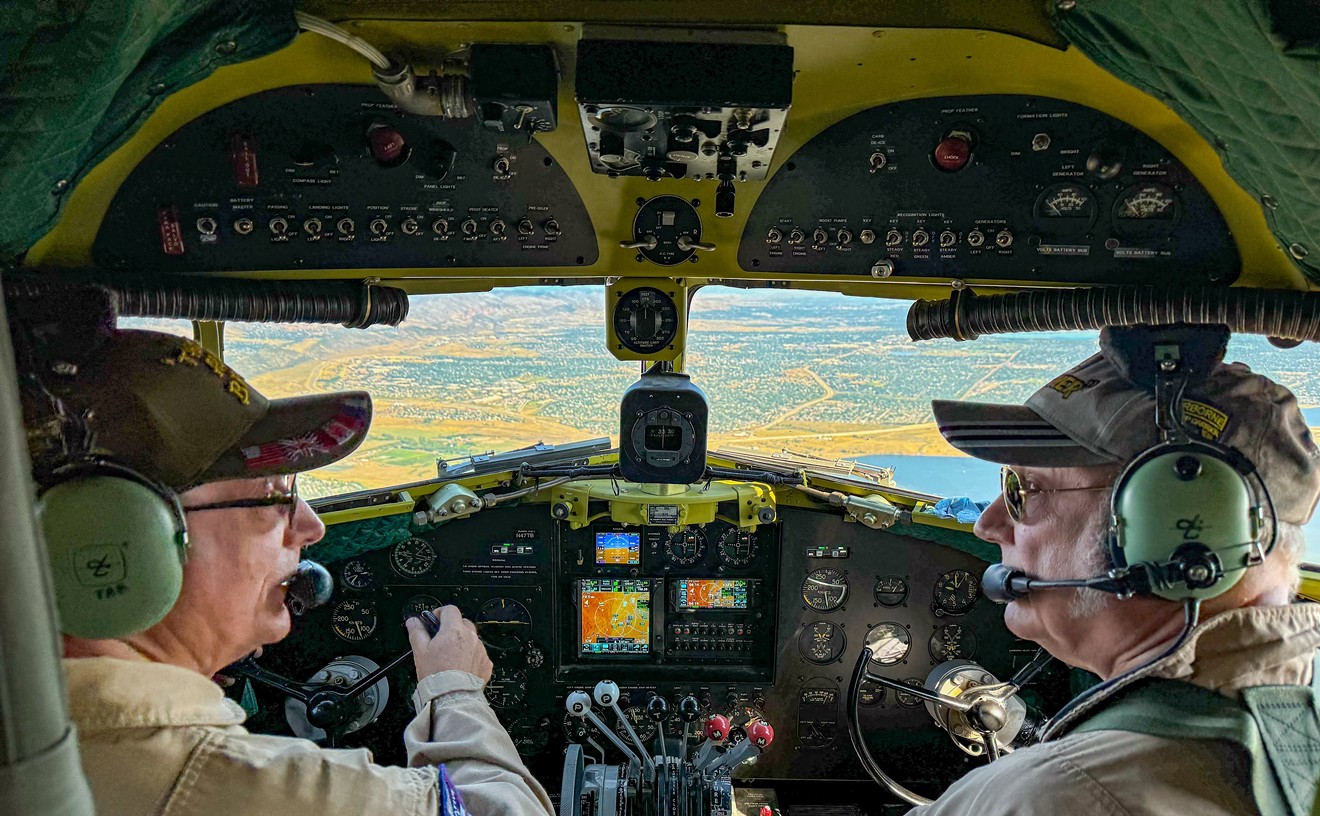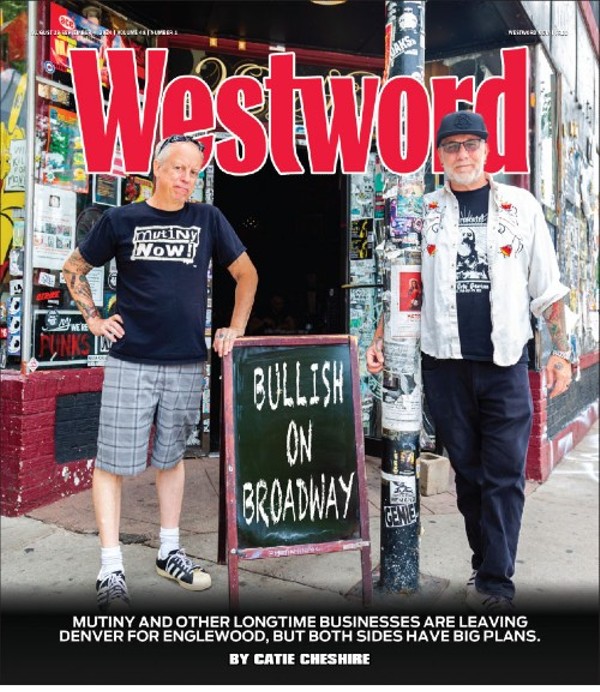Halloween is, historically, a short season devoted to the dead. And to mark that history, Denver historian and writer Phil Goodstein is back on shelves with a new offering: the first in a three-book series called The Scenic History of Denver Cemeteries Vol. 1: From Cheesman Park to Riverside.
The project started out as a one-volume effort on the city’s cemetery lore, according to Goodstein, whose research skills proved too much for one book to hold as the material expanded to more than 1,000 pages. Goodstein looked for a way to break it into two volumes at a strategic point that would more or less create two equal volumes. “I couldn’t figure that out,” he admits, and says the result was three volumes instead, with the “relatively slim” Volume 1 focusing primarily on Riverside.
Why the focus on cemeteries this time around? “There’s a close linkage between the living and the dead. How a civilization treats its dead reflects the living,” Goodstein explains, including past values and the hopes and dreams of what came before. “They’re as much a part of the city as any specific neighborhood,” he adds.
With that in mind, we asked Goodstein to share some of his favorite facts about the cemeteries he covers in this first volume, with a bit of a preview of what’s coming in later volumes, which will debut each fall for the next couple of years.
Riverside Cemetery
5201 Brighton Boulevard
Established in 1876, the same year Colorado was granted statehood, Riverside is Denver’s oldest cemetery still in operation. With at least 67,000 people buried there, it’s more populated than many of Colorado’s towns. “Riverside is the showcase of nineteenth-century Denver,” Goodstein says. “It also illustrates the problems and expenses of cemetery maintenance. Far and away, it is the most interesting necropolis in the area in terms of diverse monuments.”
Fairmount Cemetery
430 South Quebec Street
Fairmount was founded in 1890, and as of 2023 is not only a cemetery, but a Certified Wildlife Habitat due to its lush greenery. “Fairmount is not just the epitome of bourgeois Denver, but it also has large middle-class sections,” claims Goodstein, who mentions a “major plot of African-American figures” and “noteworthy monuments to workers and those who have strived for a different, better society, such as Myron Reed.” Reed was the co-founder of Denver’s Associated Charities Organization and a Democratic candidate for Congress in 1886 who focused on labor rights.
Emanuel Cemetery
430 South Quebec Street
Fifteen acres were carved out of Fairmount in 1911 to form Emanuel Cemetery, known as “the Jewish section of Fairmount,” according to Goodstein. It marks the importance of the Jewish community to the growth of Denver as a city, including “everybody from the Gart Brothers to car dealer Justin Rosen to concert promoter Barry Fey” and more.
Mount Olivet Cemetery
12801 West 44th Avenue, Wheat Ridge
The Archdiocese of Denver laid out Mount Olivet back in 1892, and it’s grown to host over 150,000 graves. “Mount Olivet reveals that Catholic Denver has been both part of the city and a world apart,” says Goodstein. “It has stunning monuments to the area's bishops, industrialist John Kernan Mullen and Dennis Sheedy. There are numerous politicians, including mayors Thomas G. Currigan and Bill McNichols,” as well as “Colorado's first governor, a non-Catholic, William P. Gilpin.”
Crown Hill Cemetery
7777 West 29th Avenue, Lakewood
Formed in 1907 by an association including George W. Olinger and five other Denver entrepreneurs, Crown Hill was “once an ultra-WASP burial spot,” according to Goodstein. In recent years, however, he reports that it’s “become filled with large memorials to people of East Asian heritage. It has stood out as the graveyard for north Denver and those who do not want to be at Mount Olivet.”
Fort Logan Cemetery
4400 West Kenyon Avenue
In 1889, a little over three acres at Fort Morgan was devoted to burial for members of the military and their families. The first recorded burial was on June 28 the same year, when Mable Peterkin, daughter of one Private Peterkin, was interred. “In a way, it is boring with rank-and-file order and military uniformity,” says Goodstein. But he also notes that “the place is ornately landscaped, making the most of natural features. It includes people who have wanted the world to remember them as veterans, such as Gene Amole and Philip Van Cise.”
The Scenic History of Denver Cemeteries Vol. 1 is already available at local bookstores, specifically West Side Books, the Broadway Book Mall and Capitol Hill Books. Goodstein has several readings and performance dates scheduled in the coming months, as well. These include:
Saturday, November 4: An independent signing from 11 a.m to 1 p.m. at a private residence, 1330 Monroe Street, where books will be available for $5 off the list price of $25.
Sunday, November 5: The Broadway Book Mall, 316 South Broadway, will host a signing from 1 to 3 p.m.
Wednesday, November 8: The Gardens at St. Elizabeth will host a free talk about the city’s burial spots at the seniors' residence, 2825 West 32nd Avenue, where copies of the book will be available for purchase and personalization.
Saturday, November 25: The Castle Marne, 1572 Race Street, will host a talk about that historic location and Scenic Cemeteries, which will be available for purchase.
Saturday, January 13: The Smiley branch of the Denver Public Library, 4501 West 46th Avenue, will host a lecture and book sale/signing from 1 to 2:30 p.m.
Phil Goodstein has been writing about Denver history for decades; to see a list of the walking tours he still does most weekends, see the walking tours website. His most recent book, The Scenic History of Denver Cemeteries Vol. 1: From Cheesman Park to Riverside, is available at independent bookstores now.

Audio By Carbonatix
[
{
"name": "Air - MediumRectangle - Inline Content - Mobile Display Size",
"component": "12017618",
"insertPoint": "2",
"requiredCountToDisplay": "2",
"watchElement": ".fdn-content-body",
"astAdList": [
{
"adType": "rectangle",
"displayTargets": "mobile"
}
]
},{
"name": "Editor Picks",
"component": "17242653",
"insertPoint": "4",
"requiredCountToDisplay": "1",
"watchElement": ".fdn-content-body",
"astAdList": [
{
"adType": "rectangle",
"displayTargets": "desktop|tablet"
},{
"adType": "rectangle",
"displayTargets": "desktop|tablet|mobile"
}
]
},{
"name": "Inline Links",
"component": "18838239",
"insertPoint": "8th",
"startingPoint": 8,
"requiredCountToDisplay": "7",
"maxInsertions": 25
},{
"name": "Air - MediumRectangle - Combo - Inline Content",
"component": "17261320",
"insertPoint": "8th",
"startingPoint": 8,
"requiredCountToDisplay": "7",
"maxInsertions": 25,
"watchElement": ".fdn-content-body",
"astAdList": [
{
"adType": "rectangle",
"displayTargets": "desktop|tablet"
},{
"adType": "rectangle",
"displayTargets": "desktop|tablet|mobile"
}
]
},{
"name": "Inline Links",
"component": "18838239",
"insertPoint": "8th",
"startingPoint": 12,
"requiredCountToDisplay": "11",
"maxInsertions": 25
},{
"name": "Air - Leaderboard Tower - Combo - Inline Content",
"component": "17261321",
"insertPoint": "8th",
"startingPoint": 12,
"requiredCountToDisplay": "11",
"maxInsertions": 25,
"watchElement": ".fdn-content-body",
"astAdList": [
{
"adType": "leaderboardInlineContent",
"displayTargets": "desktop|tablet"
},{
"adType": "tower",
"displayTargets": "mobile"
}
]
}
]

